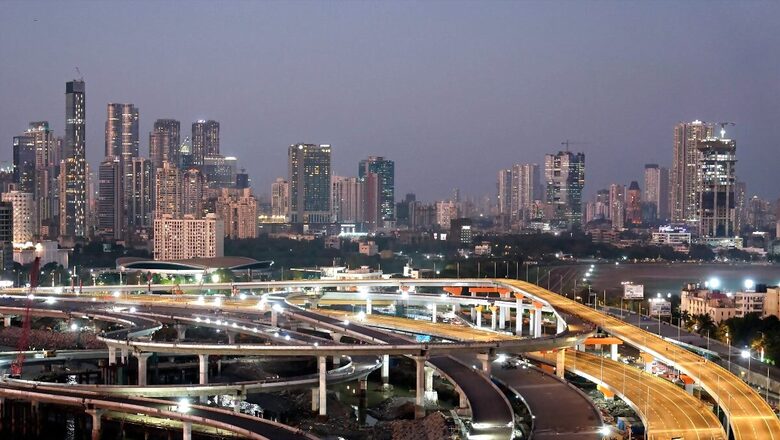
views
Maharashtra has become the first state in India to hit the $500-billion gross domestic product (GDP) mark. This is a remarkable achievement – for the country to achieve the Viksit Bharat target, every big state economy has to fire on all cylinders. However, lately, there has been a perception that Maharashtra has become sluggish, while states like Haryana, Gujarat, Karnataka, Tamil Nadu, and Telangana are stealing the spotlight from India’s largest state economy.
While constructive competition between states is beneficial for attracting investments and driving industrialisation, Maharashtra was the “OG” industrial giant and, in fact, continues to be a dominant player. Several recent events solidify this prominent role for the state.
Industries of the Future
One parameter for judging the vitality of an economy is how rapidly it catches up with the exogenous drivers of transformational change. Maharashtra is a prime investment destination, attracting industries across sectors such as semiconductors, electric vehicles (EVs), hybrid vehicles, and power electronics. No other state can boast of being home to this complete bouquet of the industries of tomorrow.
Deputy Chief Minister Devendra Fadnavis recently announced a greenfield investment of $10 billion in semiconductor manufacturing by Tower Semiconductor and the Adani Group at the Taloja industrial zone. He also revealed two significant auto investments: one focused on electric cars by Skoda-Volkswagen and another on hybrid vehicles, including plug-in electric and battery EVs by Toyota Kirloskar. While the former manufacturing site will be located in Pune, the latter will contribute to the industrialisation of Marathwada, as it will be situated in Chhatrapati Sambhaji Nagar.
Earlier in June, Ather also announced its third electric two-wheeler plant in Chhatrapati Sambhaji Nagar, emphasising how Fadnavis’s efforts were instrumental in the investment decision.
Leveraging Production Linked Incentives
Maharashtra has made significant strides in leveraging the Modi government’s flagship Production Linked Incentives (PLIs) across various sectors. This alignment with the national objectives of an Aatmanirbhar Bharat has not only furthered PM Modi’s vision but has also made Maharashtra future ready.
One sector where PLIs have been particularly effective is telecommunications equipment. Two key players—Ericsson and Jabil—are contributing to the growth of electronics manufacturing in India and are located in Pune.
The then Chief Minister, Devendra Fadnavis, was instrumental in attracting Ericsson’s state-of-the-art manufacturing facility to Pune in 2016. Jabil also expanded in Pune with business plans formulated prior to Covid. Both companies were well-positioned to leverage the PLIs announced in the aftermath of the pandemic.
Recent news indicates that as Apple expands its manufacturing footprint in India, it will increase its sourcing from Jabil, further benefiting Maharashtra.
Active Pharmaceutical Ingredients (APIs) is another area where PLIs have aimed to aggressively create capacities to reduce reliance on China. Maharashtra again plays a crucial role in this regard. Recently, it was announced that the production of clavulanic acid—an important API formulation—has been onshored by Kinvan, a Mumbai-based firm.
Defence Production
One significant concern for India has been the indigenisation of defence production. Reliance on imported weaponry only goes so far in times of crisis. Yet again, Maharashtra has been at the forefront of local capacity building in a sector that is make-or-break for national security.
Bharat Forge, India’s premier defence production firm, manufactures critical gear in Pune. Solar Industries in Nagpur is India’s leading explosive manufacturing firm. Recently, SBL Energy started a new plant in Nagpur to manufacture TNT, becoming only the second private sector firm in this space.
Defence firms are choosing Pune and Nagpur as their base because the two cities are great repositories of specific competencies relevant to the industry.
Recently, Maharashtra-based SME Nibhe Ltd., which predominantly engages in welding and fabrication, announced two investment MOUs in Kolhapur and Shirdi to manufacture ammunition and other defence components. MSMEs are a critical part of defence production, and Pune has a large presence of MSMEs in the defence sector.
Clean Energy
Apart from consumer-facing clean energy products like electric vehicles, Maharashtra is also blazing a trail in an area that India should have tapped into long ago, but has been late to the party. Pumped hydroenergy projects represent a significant clean energy opportunity, and Maharashtra is again leading by example.
Companies like Adani, Torrent, and NTPC have announced large-scale investments in pumped storage hydropower (PSH). Additionally, Rishikesh-headquartered THDC, a public sector firm, has recently signed a memorandum of understanding with the Maharashtra government to develop almost 7 gigawatts of pumped hydro capacity. There are six projects planned – Malshej Ghat (700 megawatts or MW), Aruna (1950 MW), Kharari (1,250 MW), Humbarli Birmani (1,000 MW), Aruna Kolamb (1,200 MW) and Morawadi Majarewadi (690 MW).
Clean energy expansion is not just the cornerstone of India’s international energy transition commitments; it is also essential to remain relevant in export markets. Maharashtra is proactively preserving its competitive edge through these initiatives.
Magnetic Maharashtra
Maharashtra has, of course, been the traditional flagbearer of India’s industry, with a rich history of being home to some of the country’s biggest business houses. However, the current wave of new industry expansion began with the Magnetic Maharashtra initiative, which was launched by then Chief Minister Fadnavis early in his term.
One of Fadnavis’s earliest initiatives upon taking office was to bring together the captains of industry to ensure that the Make in Maharashtra initiative aligned with the Make in India aspiration. Although the political instability following Fadnavis’s term as Chief Minister delayed some of his initiatives, the state has recently returned to the industry-friendly path he charted.
After speaking with current and prospective investors, it is evident that Devendra Fadnavis has established a clearly defined mechanism to ensure that investors are heard and their proposals are addressed in a timely manner. For this purpose, he has formed a small group that includes an Officer on Special Duty from his office and the industries secretary. This professional approach has resulted in massive gains for Maharashtra as investors cite this as an example of great investment experience.
The numbers are there to see: in the first quarter of this year, Maharashtra has amassed 52.5 per cent of the total Foreign Direct Investment (FDI) that India has received. This marks a 20 per cent increase compared to the same quarter last year.
Maharashtra’s $1 trillion GDP aspiration relies on steady industry growth. It is indeed heartening to see that after a period of relative inactivity, new-age industries are now flocking to the state, which embodies the strength of the Indian economy in its true and complete sense.
Nimish Joshi is Director, Smahi Foundation of Policy and Research. Views expressed in the above piece are personal and solely those of the author. They do not necessarily reflect News18’s views.




















Comments
0 comment